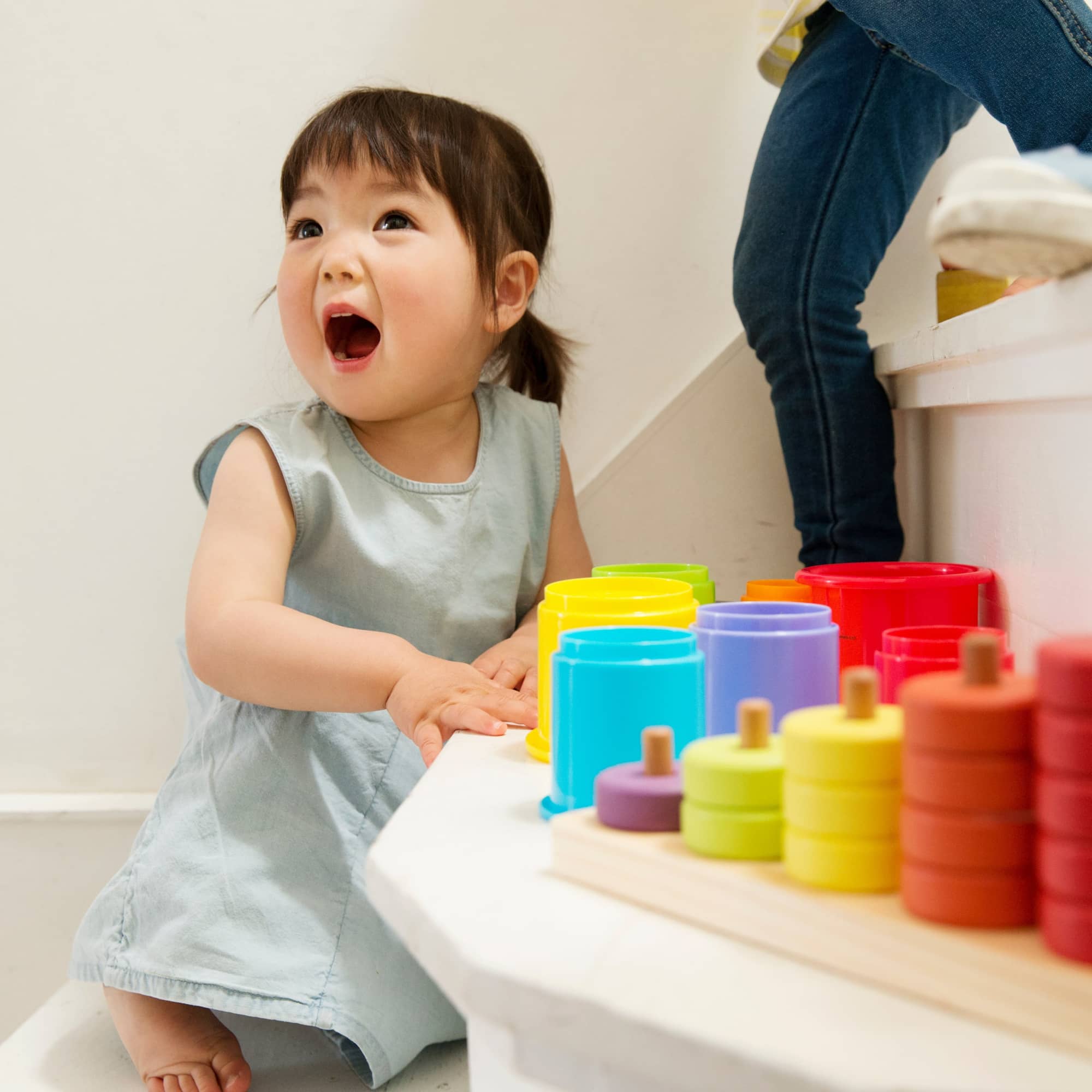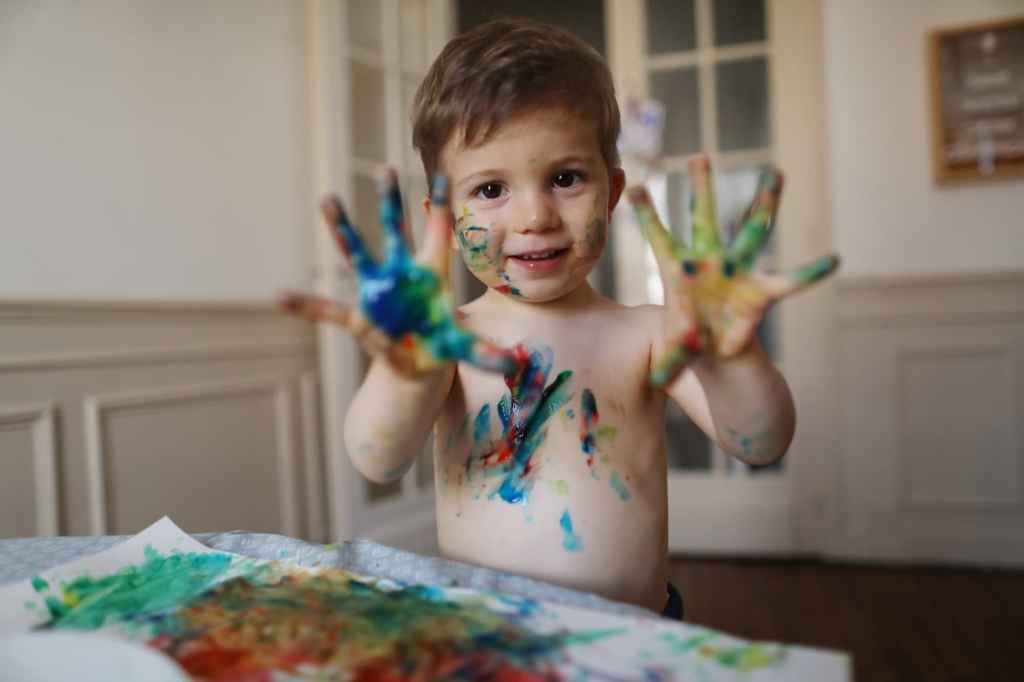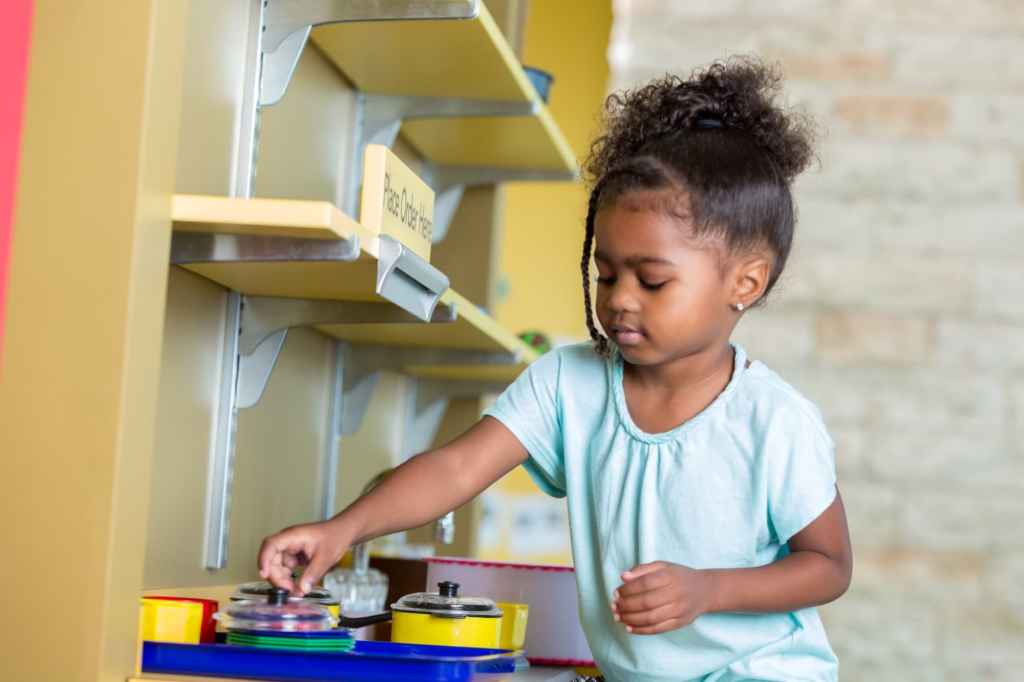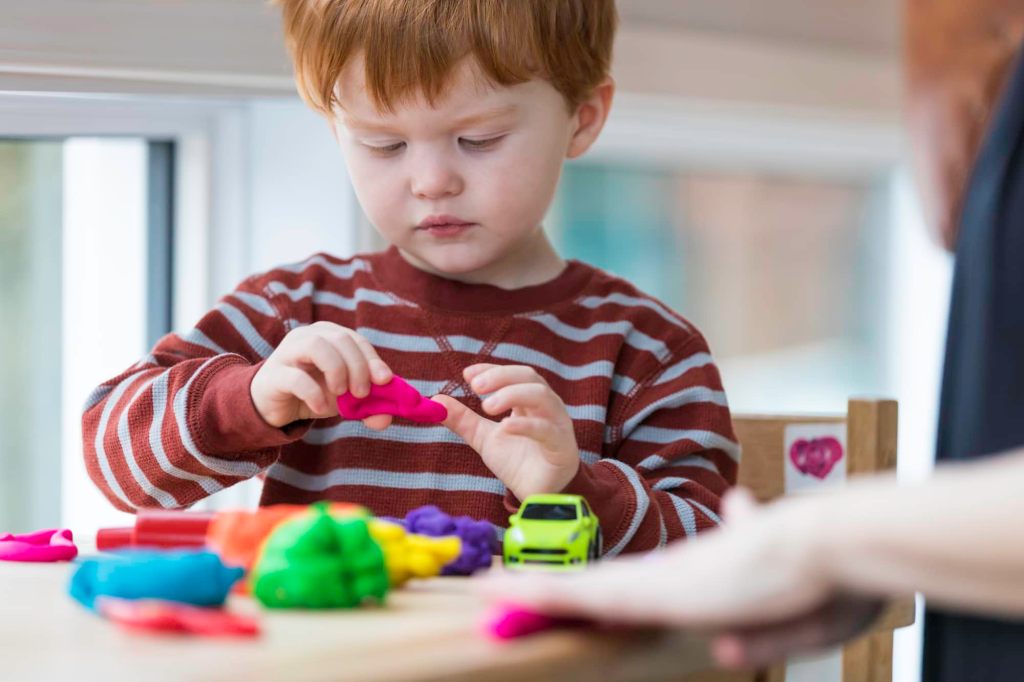
- POPSUGAR Australia
- Living
- Using the Montessori Method With My Toddler Engages Her Creativity – and Lowers My Stress
Using the Montessori Method With My Toddler Engages Her Creativity – and Lowers My Stress

I first learned about the Montessori method when I was in grad school for my master’s degree in marriage and family therapy. This was well before I had my first child, so I wasn’t looking at this way of learning with a parental lens, but even then, I knew I liked this holistic approach.
Years later when I became a parent, I delved deep into the research that examined Montessori schools vs. non-Montessori schools. What I took away from these studies was that children who are taught using the Montessori method tend to have higher levels of creativity than their counterparts in non-Montessori schools. Other studies have noted that children who attend Montessori schools are more likely to experience intrinsic learning, meaning they are engaged in what interests them, and feel personally motivated to learn more. This is typically not the case in conventional schools, where grades and structured progress reports make it clear what the expectations for learning are without allowing much room for exploration. Children who attend Montessori schools tend to exhibit higher levels of confidence in their abilities to learn and master skills, with the majority of them stating that they are happy to attend school. In other words, children who are exposed to Montessori ways of learning tend to feel more confident in themselves, enjoy facing new challenges, regularly engage their creativity, and have higher levels of emotional intelligence.
The Montessori method focuses on providing infants up to kids who are 18 with an open, interactive environment conducive to learning typical school subjects, as well as music, art, and life skills, with the ultimate goal of developing healthy adults. Some of my favorite aspects of this method are that it introduces new and exciting ways to look at mundane activities and that it views play as the child’s work. With little ones, keeping them engaged and curious in their environment is especially important as they can easily get bored, which can lead to frustration and agitation on their part. As for parents, we all know how challenging and stressful this can be.
There are a few ways to implement this type of open learning in your home that can lead to an increase in your child’s creativity and engagement and therefore a decrease in your stress level as a parent. Keep reading for what we do and how we do it!
Related: 45 Boredom Busters For Toddlers
Observe How Your Child Likes to Play
The first way we began engaging this philosophical practice was simply by observing our child, noticing which toys she was drawn to, and thinking about what she was attempting to master developmentally. As a parent, it can be easy to pressure yourself to be perfect and come up with brilliant activities every day that aim to teach your children. This mentality can lead to high levels of parental stress and feelings of defeat when these new and exciting activities only keep your child actively engaged for a few minutes.
To combat this, try slowing down and observing what set of physical and/or mental skills your child is aiming to master next. Once noted, you can offer play opportunities to your child that adapt to these developmental shifts. For example, if your little one is trying to master pouring, you can set up pouring stations with water outside, give them a spoon or scoop to use with their toys inside, or see if they want to help you pour something to eat or drink. Remember these household shifts don’t mean you need to go out and buy anything new. It means noticing the skills they keep going back to that particular day and offering opportunities to play that enable that skill use.
Keep Play Exciting and Varied
The second philosophy we utilize is that play is spontaneous and flexible. What we introduce as one activity may turn into three or more unique alternative activities. Instead of confining our child to only playing a certain way, we adapt and go with the flow, allowing her to take the lead and show us what she is wanting to master next. This can be trickier than expected, because as parents, it can feel very tempting and almost automatic to want to step in and show our child how to do something. But I urge you to practice pausing and see where your child goes with the activity first. Doing so will give you more clues as to what they’re interested in naturally, which can make playtime a lot more enjoyable for everyone participating – not to mention it’s way less work for you.
Engaging them in this way also activates their brain more, challenges them, and pushes them to push themselves. As they explore, play, and create, they will inevitably wear themselves out both physically and mentally. In other words, this will most likely lead to a good nap, solid quiet time, or a more peaceful snooze later on.
Related: Bringing Montessori Home: How to Implement the Best Practices at Home
Put Toys on Their Level
The third Montessori tool we use is making child-safe items easily accessible to our little one. In her room, she has open low shelving with toys she can access on her own whenever she wants. The shelves are kept tidy and uncluttered, and every two weeks, I rotate out the toys to keep her interested in engaging with “new” old toys or items. We also keep her eating utensils, her dishes, and towels in the lowest drawer and cabinet in our kitchen. This allows her to gather her appropriate supplies before we eat together and access a towel if there’s a spill. Doing simple shifts like this in your household can offer your child more independence and gives them yet another Montessori activity to engage in throughout the day – which can make your life a bit easier.
Be Ready For a Little Struggle
If your child is struggling and becoming frustrated with what they are trying to do, know that that is totally OK. Kids like to push themselves and see what they are capable of, especially because their minds and bodies are changing so rapidly during these early developmental stages. Allow them to struggle for a bit, as this helps them learn. There are a few reasons to step in – the first is if they endanger themselves and stepping in protects them from harm, and the second is to show them how to process their frustration and encourage them to continue trying after you’ve allowed them to struggle for a bit.
Creating more access to child-safe items and taking cues from your little one with play can lead to your child experiencing increased independence, as well as higher levels of confidence and creativity. Setting up a Montessori-inspired environment in your home can help your child stay engaged and curious throughout the day, while also relieving the pressure off of you to keep your child busy with planned activities. When using the Montessori method, your living environment provides endless opportunities for play and learning that are spontaneous and creative, all while helping your child work through their developmental milestones.





